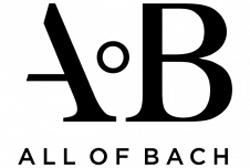
On May 2, just before the concert by the Netherlands Bach Society in the Grote Kerk in Naarden, allofbach.com will go live. All of Bach is a project of the Netherlands Bach Society, which began performing and recording all of Bach’s works last September. The first concert recordings will be made available on allofbach.com on May 2, followed by a new Bach recording every Friday.
Each Bach work will have its own page, with links to the recording, interviews, background information, the recordings’ details, and a provision for audience reactions. The site is bilingual (Dutch and English).
All recordings and other content are available free of charge; the project is being financed by private gifts and fund donations.
For information: allofbach.com.


